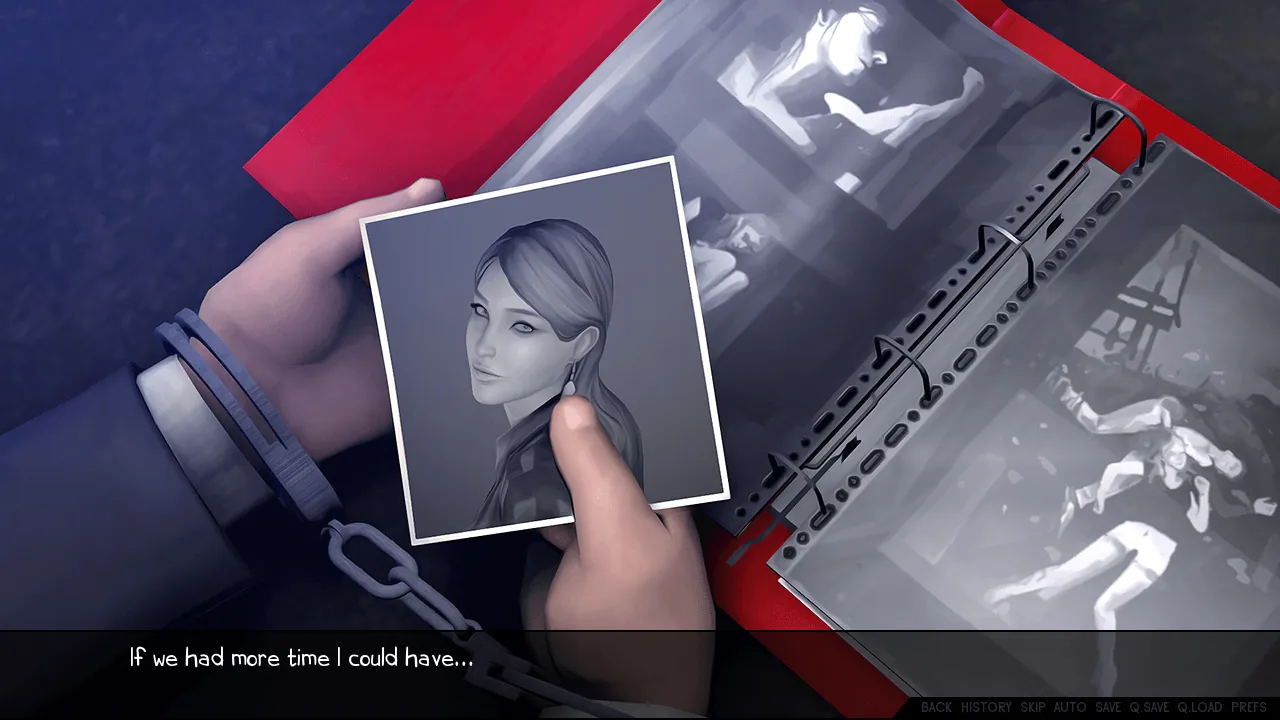
Play Returning to Mia
Returning to Mia review
Explore the Story, Features, and Tips for Returning to Mia
Returning to Mia is a captivating interactive game that continues the story from its predecessor, inviting players to reconnect with Mia and shape the evolving narrative. This article dives deep into the game’s plot, features, and practical advice to enhance your experience. Whether you’re a returning player or new to the series, discover what makes Returning to Mia a unique and engaging title.
Understanding Returning to Mia: Story and Gameplay
Ever found yourself wondering what happened to Mia after all this time? 🤔 If you played the original game, you know the emotional rollercoaster her story took us on. Well, get ready to dive back in, because Returning to Mia picks up the narrative two years later, and let me tell you, the reunion is anything but simple. This interactive story game masterfully continues the journey, pulling you right back into its emotionally charged world from the moment you hit ‘start’.
The core of this experience is its deeply personal Returning to Mia storyline. You’re not just a spectator; you are the protagonist, returning to a town and a life you left behind. The memories are still there, but so much has changed. The way the game handles this passage of time is brilliant—it feels real, weighty, and packed with consequences. I remember my first playthrough, nervously choosing every dialogue option, terrified of saying the wrong thing to someone I once knew so well. It’s that level of immersion that sets this game apart.
### What is Returning to Mia About?
So, what exactly is this game all about? At its heart, Returning to Mia is a story about reconciliation, unresolved pasts, and the difficult path of rebuilding connections. The Returning to Mia plot summary begins with your character receiving a cryptic message that draws you back to your hometown. Mia is there, but the two years apart have created a chasm filled with silence, new relationships, and unspoken regrets.
Your goal isn’t just to rekindle a romance; it’s to navigate a web of interpersonal dynamics. You’ll reconnect with old friends, meet new faces who have become important in Mia’s life, and uncover what truly happened during your absence. Every conversation is a thread in a larger tapestry, and pulling on the wrong one can change the entire picture. It’s a powerful relationship building game that asks: can you truly go back, or are some things lost to time?
To help you keep track of the key figures you’ll meet, here’s a breakdown of the main cast:
| Character | Role in the Story | Connection to You & Mia |
|---|---|---|
| Mia | The central figure you’re returning to | Your former partner; relationship is strained and complex |
| Leo | Your old best friend | Feels abandoned; knows more about Mia’s life now than you do |
| Sarah | Mia’s new close friend | Protective of Mia; wary of your return and your intentions |
| Ben | A local café owner | Acts as a neutral confidant and source of town gossip |
### Key Gameplay Mechanics 🎮
The Returning to Mia gameplay is what makes the story so compelling and personal. This isn’t a game about quick reflexes; it’s about thoughtful consideration. You’ll spend your time exploring beautifully rendered environments, engaging in deep conversations, and making choices—so many choices.
The primary mechanic is the decision-making system. During dialogues, you’re often presented with multiple responses, each timed to create a sense of real, pressured conversation. Will you be apologetic, defensive, flirtatious, or cold? There’s no “right” answer, only what feels true to the story you want to create. This is where the legendary game choices impact comes into play. Early on, I chose to hide my real reason for returning from Leo, thinking I was sparing his feelings. Big mistake! That one decision of omission made him deeply distrustful of me for chapters, locking me out of crucial information later.
Pro Tip: Don’t rush your dialogue choices! The timer adds pressure, but it’s often better to take a breath and think about the long-term consequence rather than the immediate reaction.
Exploration is another key pillar. You can revisit key locations from your past, each holding memories that trigger flashbacks. Investigating these spots isn’t just for nostalgia; it can unlock new dialogue options and help you piece together the full story of what you missed. It’s a fantastic way to make the world feel lived-in and meaningful.
### Character Development and Choices 💞
This is where Returning to Mia truly shines. The Returning to Mia characters are not static NPCs; they are dynamic individuals who remember your actions, hold grudges, and forgive (or don’t forgive) based on your behavior. Your choices are the engine of their development.
Your relationship with each character is tracked through a largely hidden affinity system. A seemingly small choice, like agreeing with Sarah about a sensitive topic, can significantly boost your rapport with her while simultaneously lowering it with Leo, who has a different viewpoint. I learned this the hard way when I tried to play everyone perfectly and ended up with no strong allies at a critical story junction! 😅
The game choices impact on the narrative outcome cannot be overstated. There are multiple endings, and which one you get is entirely dependent on the web of relationships you’ve woven throughout the game. Did you rebuild enough trust with Mia? Did you mend your friendship with Leo, or burn that bridge for good? The finale doesn’t feel like a simple A/B choice; it feels like the natural, earned conclusion to all your actions.
My Insight: Don’t be afraid to be imperfect. On my second playthrough, I leaned into my character’s guilt and made more vulnerable choices. It led to a much messier, but ultimately more authentic and rewarding, conclusion with Mia. This relationship building game rewards honesty, even when it’s difficult.
The beauty of this interactive story game is that it mirrors life. Relationships are complex, communication is key, and every action has a reaction. Returning to Mia gives you the tools to navigate that complexity and tells a story that is uniquely yours because of the choices you make. It’s a powerful reminder of why we play games: to feel, to connect, and to see a part of ourselves reflected in the digital world.
Returning to Mia offers a rich, interactive experience that builds on its predecessor’s story while providing players with meaningful choices that shape the narrative. Its engaging gameplay and character-driven plot make it a compelling title for fans of story-focused games. Dive in to explore Mia’s world and discover the many paths your journey can take.





















